Anozero’ 24, Coimbra Biennal
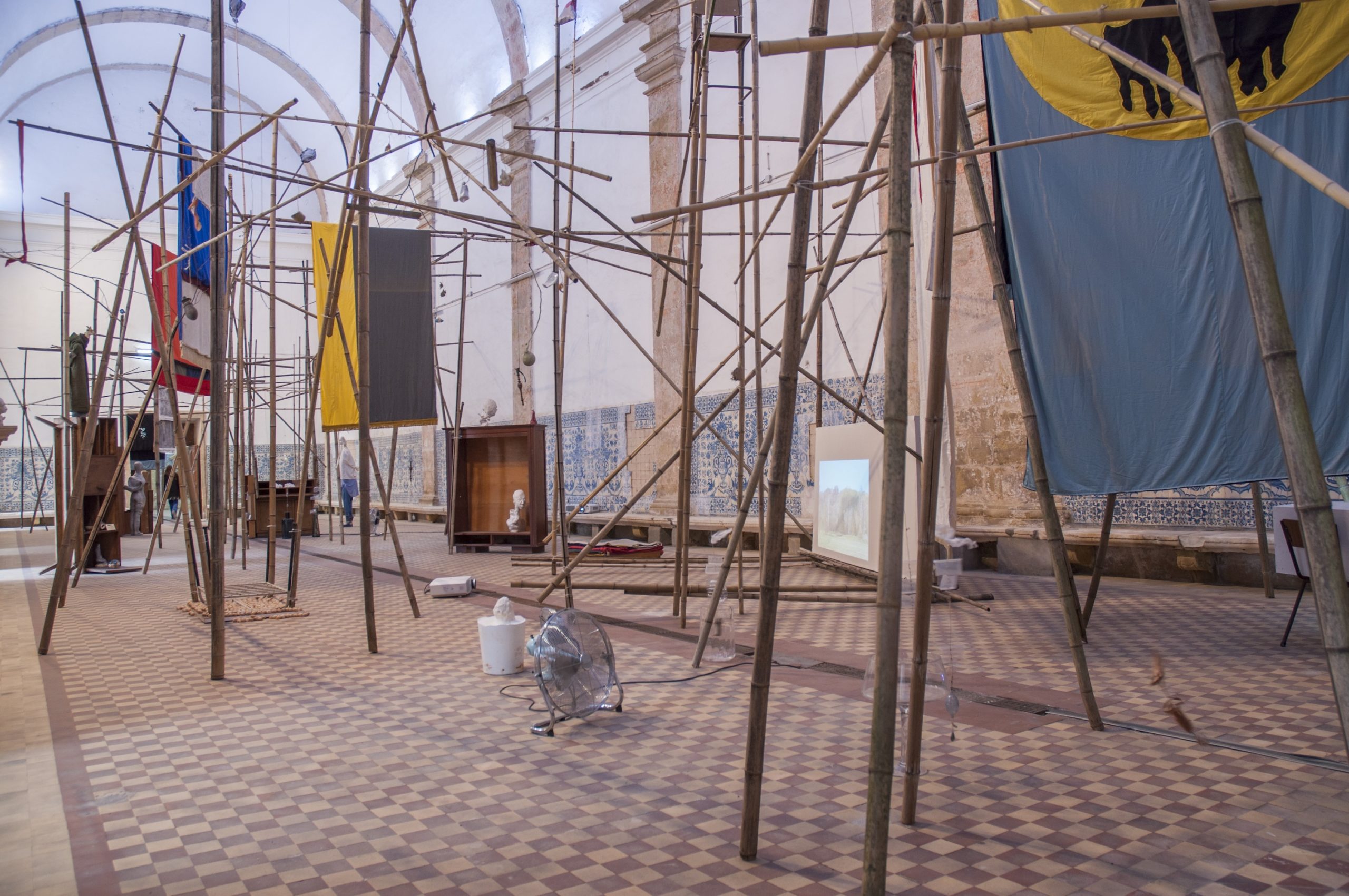
Anozero’24 – Coimbra Biennale
Turismo do Centro – Center of Portugal
Divers lieux, 6 avril – 30 juin 2024
Curatrice et curateur : Marta Mestre et Angel Calvo Ulloa
The new edition of Anozero, the Coimbra Biennial is entitled “The Fantom of Liberty”, in reference to Luis Buñuel’s well-known film. A loaded title, fundamentally polysemic and ambiguous, since the word ghost can echo a disappearance, that of freedom, as much as a ‘presence’ that haunts both the spaces of the city and the memory of its inhabitants. The reference to the film of the Spanish-Mexican director is not insignificant, as it also refers to the centenary of André Breton’s publication of the Manifesto of Surrealism. But above all, 2024 is the fiftieth anniversary of the Carnation Revolution, which liberated the country from the yoke of dictatorship under which it had lived for decades. This year’s event will therefore focus on both the dark years of dictatorship and the tremendous movement to free people’s minds generated by the ‘revolution’.
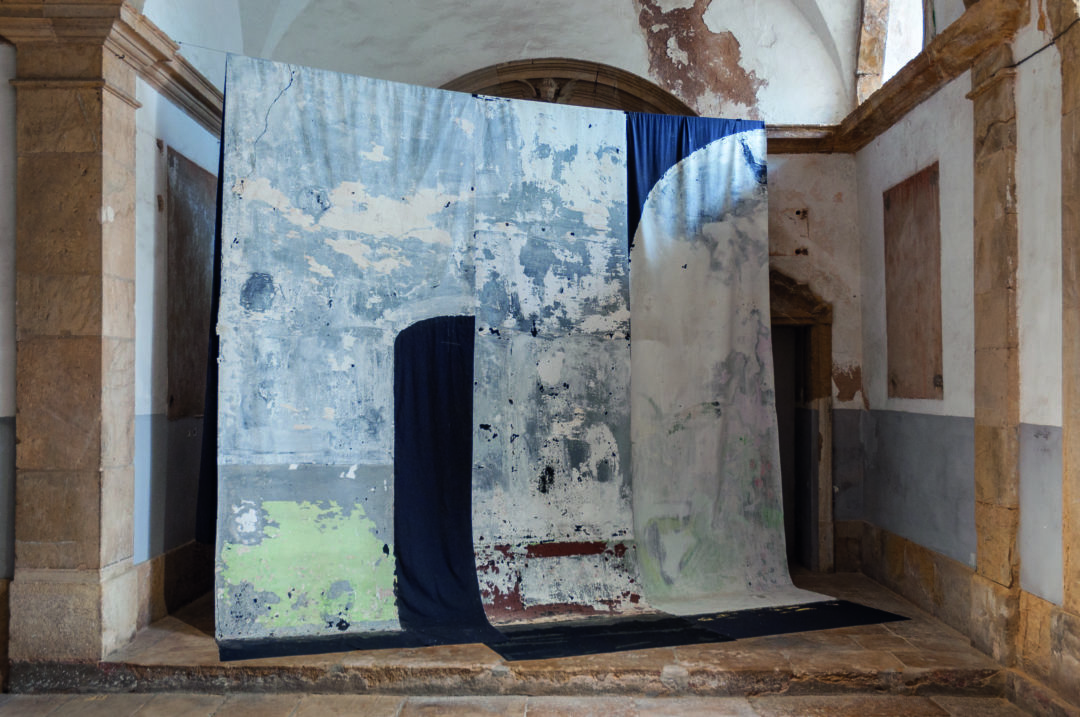
The Santa Clara-A-Nova monastery, the first stage of this biennial, which is taking in ten or so venues across the city, welcomes us with the trills and chirps of birds in Robert Filliou’s sound work, which fills the long corridor on the ground floor as soon as you cross the threshold: what more elegant way could there be of illustrating a biennial that is placed under the sign of evocation? The monumental building – threatened by an improbable and inconceivable property development designed to turn it into a luxury hotel – is home to most of the biennial’s works, and its generous spaces can easily accommodate voluminous installations, such as that by German artist Susanne Themlitz, whose very light and fragile constructions allow themselves to be swept along by the currents of air (or is it the passage of ghosts that makes them vibrate?) that flow through the monastery, creating subtle melodies in the manner of bamboo chimes. There couldn’t be a better venue for an event whose theme is dedicated to the idea of liberation: several artists have seized on the very architecture of the site and its history to create site-specific works that reflect its special atmosphere. Carla Filipe has reproduced the weave of the bars in the cells to create a tapestry covering the walls, reminding us of the function of a building whose main purpose was to imprison nuns, except that, as the biennial’s curator rightly reminds us, life in the prison is not just about the nuns themselves, Marta Mestre rightly reminds us that life in the monasteries was not as monastic as we generally think, provided we were well-born – the compartmentalisation of society did not stop at the gates, but extended right into the recesses of the building and its workings.
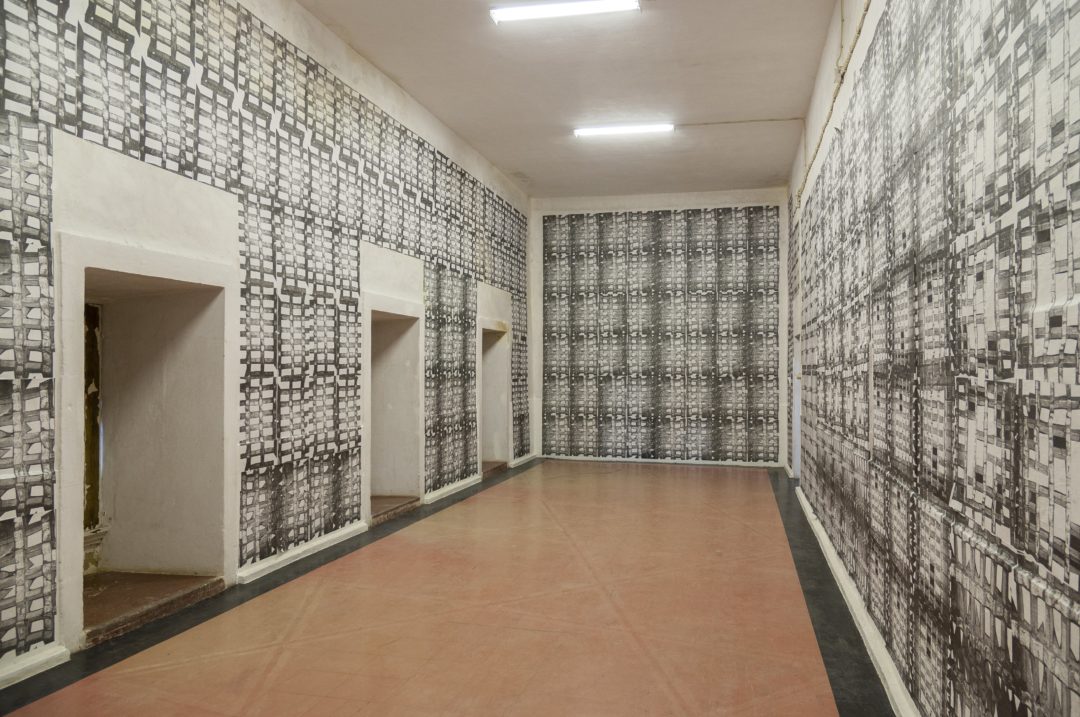
More than just another artefact, Patricia Gómez and María Jesús González’s project is part of an extremely advanced in situ project, literally turning the ‘skin’ of the cell walls inside out and replacing it in the same place, but in reverse, in a gesture that is as symbolic as it is spectacular, a way of revealing the memory of the place. The works can be discovered as you explore the building, which appears to be a city in miniature, with its outbuildings, gardens and terrace: on the terrace stands a huge loudspeaker that regularly projects a powerful foghorn sound that can be heard as far away as the middle of the city, producing an astonishing effect in a city so far from the ocean. Berio Molina’s Dislocation alerts us to the many threats facing Portugal: the rise of the oceans as a result of global warming, and the intense touristification that the country is undergoing, with the transformation of the monastery as a collateral effect that particularly concerns the people of Coimbra. On the upper floors, the video installations by Diego Bianchi and Adam Pendleton take us on a journey through resolutely opposed continuums and rhythms. The American revisits the history of modernism to bring the ardour of the avant-garde back to the fore in a syncopated, ‘stroboscopic’ video, flashing the graffiti that adorns the sculpture of General Robert E. Lee to celebrate what he calls a ‘Black Da da’ and, in the process, revive the spectre of the American Civil War (Toy Soldier), while in the video La Cura, Argentine artist Diego Bianchi performs an ultra-sensual dance with the sculptures in the Palais des Glaces museum, taking advantage of their imminent removal to show his love for the inanimate objects he seems to want to reanimate.
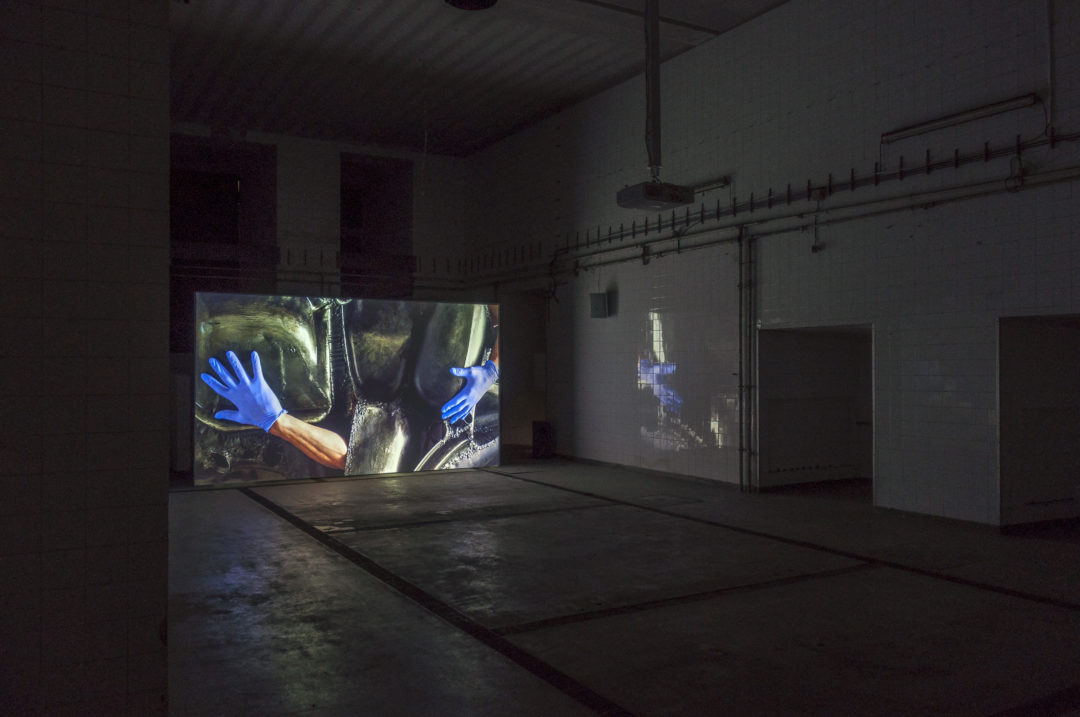
Yonamine’s work, Sem Titulo, is weighed down by the diverse cultural influences that have shaped it, having been born in Angola and spent time in a number of Portuguese-speaking countries, including Brazil. The Angolan artist’s joyful haphazardness is an iconoclastic way of questioning the sacredness and formal rigidity of so-called ‘Western’ art. On the Pátio das Escolas, an important site for Portuguese culture and its colonial history, the artist has built a kind of fortification from which emerge flags that take up the codes of maritime navigation mixed with those of the Angolan church, blurring the religious message as a reminder of the tragedy of migrants.
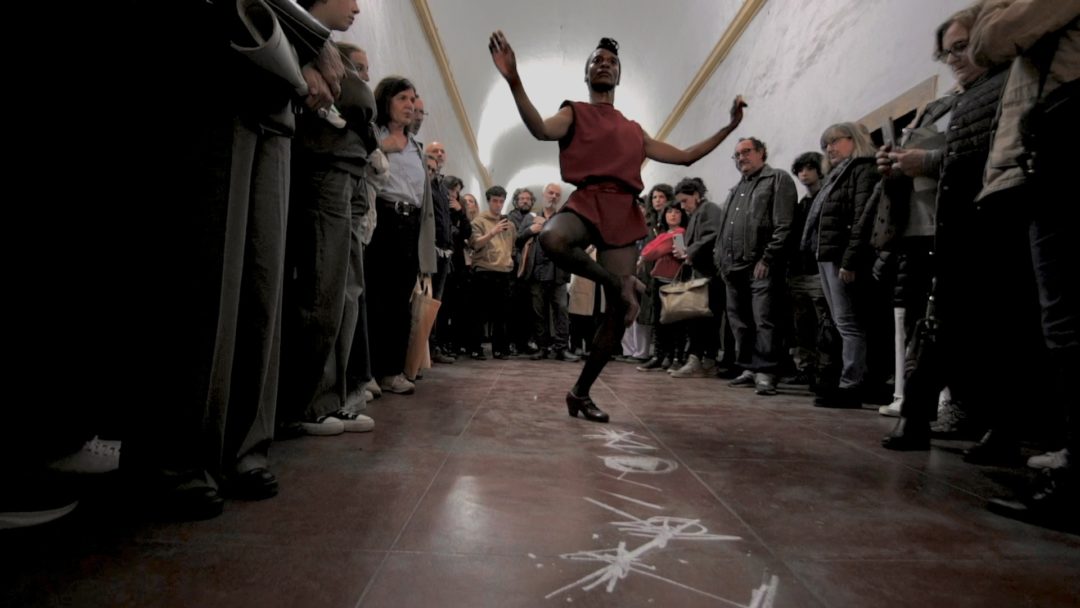
Yinka Esi Graves brought the opening to a close with a frenzied performance: the Londoner’s choreography seeks to reveal the multiple influences that presided over the birth of flamenco, and in particular the invisible part of her African origins. Inscribing text on the floor as she moved, the performer took the audience into the corridors of the monastery, trying to convey the complexity of this dance, all pounding and rhythmic breaks, filling the space with her polymorphous, syncopated figures.
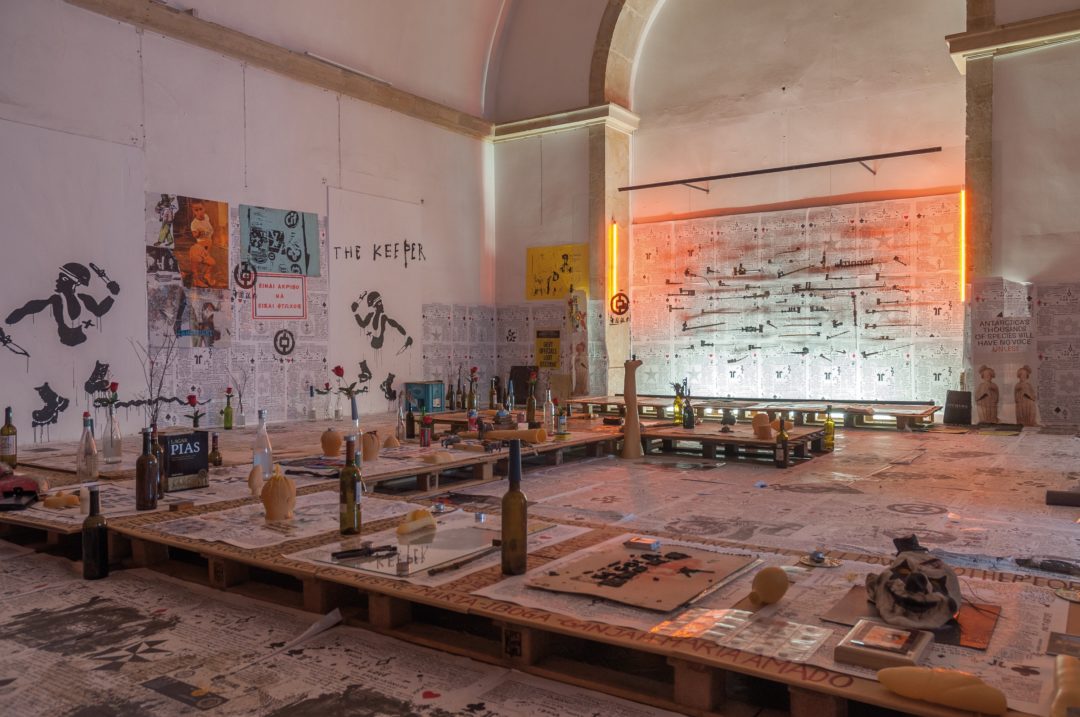
As well as the Pátio das Escolas, the biennial has taken over other iconic venues in Portugal’s former capital, including the Botanical Gardens and the CAPC Sede, a major venue for debates and celebrations around the Carnation Revolution, which houses a large collection of documents and objects relating to the revolution. The Colégio das Artes is home to an exhibition by the Nova Escultura Galega collective, a movement whose formal exuberance and joyful iconoclasm echoed the creative explosion of the Surrealist movement. Finally, it’s impossible not to mention the spontaneous choir that brought together so many Coimbrians at Station B of the tram-train, to the strains of the famous revolutionary song Grândola Vila Morena, whose evocative power was palpable in the audience, awakening memories of exile and trauma in the older members of the audience, but also of hope and deliverance.
Head image : Suzanne S. D. Thelmlitz. E la dentro, Vento, 2024. Installation, Matériaux et dimensions variables. Courtesy galerie Vera Cortès.
- From the issue: 108
- Share: ,
- By the same author: Don't Take It Too Seriously, Hilma af Klint, Playground, Lyon Biennial, Signs and Objects. Pop art from the Guggenheim Collection at Guggenheim Museum,
Related articles
Performa Biennial, NYC
by Caroline Ferreira
Camille Llobet
by Guillaume Lasserre
Thomias Radin
by Caroline Ferreira